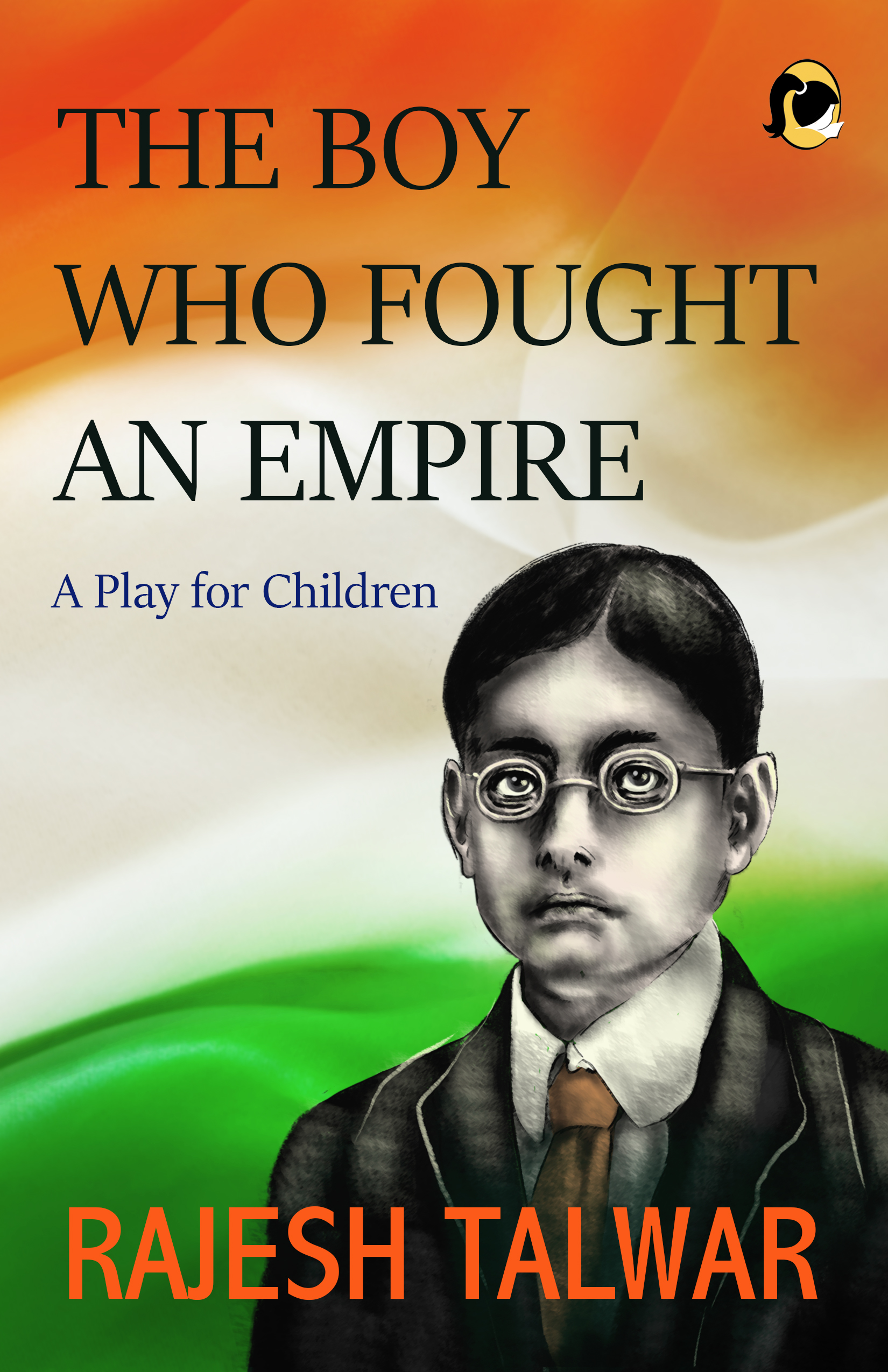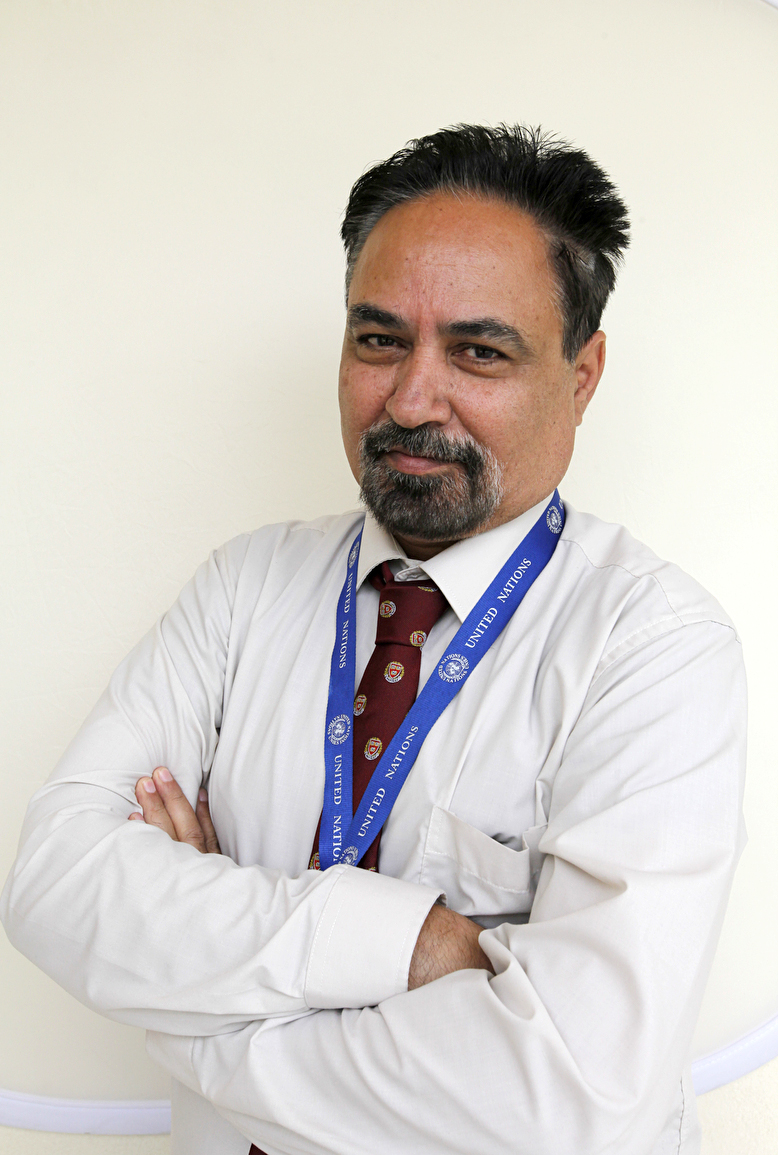In Conversation with the Author of the Book “The Boy Who Fought an Empire,” by Mr. Rajesh Talwar
Interview With Author Rajesh Talwar
Could you tell us about the central themes explored in your book “The Boy who Fought an Empire” and how they resonate with readers?
You could say that the central theme running through the play is one of patriotism but there are several other significant themes explored in the book. Subhash Bose was in search of meaning and purpose in his life from a young age. We should all enjoy our lives, but consider that our lives can sometimes be immeasurably enriched when we involve ourselves in a higher purpose as compared with mere self-gratification.
A second theme is that of bullying and the need to stand up to it. Now bullying is an important issue in schools around the world, and in some rare instances it may be even a teacher who is bullying students. Netaji combats bullying by an English teacher at the Presidency College, Calcutta. This teacher Mr Oaten passed racist and insulting remarks against the students. The teacher also manhandles students. Unmindful of the consequences to himself, Netaji as class representative first takes the matter up with the principal of the college and when that yields no results confronts the teacher. It is one of the most dramatic scenes in the play.
Another related theme explored through most of the book is that of the importance of courage, for Netaji is courageous if nothing else. At a time when the British Empire dominated much of the world, it took immense courage and self-belief for an Indian to determine that he would fight and bring down that empire.
What inspired you to become an author, and what drew you to writing this particular book?
Many years ago, when I was just twelve years old, in school we had a new subject introduced called ‘Essay Writing.’ This was La Martiniere College in Lucknow. Now, I was just an average student, and didn’t do particularly well in any subject be in Maths, Physics, Chemistry and so on, but in this subject, I was doing better than everyone else. This surprised everyone, that is to say, myself, the other students and even the class teacher. That was the time I realized that I had an aptitude for writing and analysis. This will answer your first question as to what inspired me to become an author.
As to this particular book, a few years ago, I had written another book on Subhash Bose which was titled ‘The Vanishing of Subhash Bose: The Mystery Unlocked.’ I had written that book because I believed that Subhash Bose had not received due acknowledgement for his service to our nation in our history books. It then occurred to me that a book such as the present one would introduce his life to children in an enjoyable, readable format. Unfortunately, as you know, many history books make for extremely dull reading.
Can you describe your writing process? How do you approach crafting characters and developing plotlines?
As I said, it was easy for me to write this play for children because I had already carried out a considerable amount of research on Netaji for the purposes of writing the previous book. From that reading I already had an idea of Netaji’s character. In my works of fiction, I have had to rely on my imagination but here the task was for me to authentically express Netaji’s character in a convincing and relatable way. Netaji had written about his younger day experiences in a book titled ‘An Indian Pilgrim: An Unfinished Autobiography’. That book was particularly useful for me in fleshing out the earlier scenes in the play that are focused on Subhash Bose’s childhood in school and later on his time at Presidency College. As a matter of fact, in some scenes in the interests of an authentic narrative I have used Netaji’s own words used in his autobiography.
What challenges did you encounter while writing “The Boy Who Fought an Empire,” and how did you overcome them?
Netaji led such an eventful life that the first major challenge for me was to decide what to include and what to exclude. I had to also give thought to whether the material I was including was child appropriate. For instance, Netaji confronts an English teacher at Presidency College, Calcutta who used racist slurs and violence in his interactions with Indian students. I had to devote some thought to the crafting of this scene because it should send out a message against bullying but not a message that you should disrespect your teachers.
Many authors draw inspiration from real-life events or experiences. Is there anything from your own life that influenced the story or characters in your book?
During the course of my work with the United Nations over two decades I have had an opportunity to work in numerous countries across three different continents. Some of these nations were also former colonies. I discovered a pattern. In these nations some freedom fighters had been ignored. There were freedom fighters who seized power but ignored the contributions of others. That made me think of my own country and I quickly realized that here too the contributions of people like Subhash Bose, the Indian National Army and those who participated in the Indian Naval Mutiny were ignored. This is deeply unfortunate. Every nation should honour its heroes and should make sure that it gives credit where it is due. Despite Netaj’s tremendous contributions there was not even a portrait of the man in the Central Halls of Parliament till decades after independence. As a matter of fact, leaving Netaji aside, even the Rani of Jhansi Regiment deserves a major sculpture in more than one important Indian city and a museum dedicated to it. It’s a shame we don’t have a single Bollywood film on our national heroines. I hope Bollywood producers are listening.
How do you hope your book will impact readers? Are there specific emotions or reactions you aim to evoke?
I hope that children who read the play or perform it will be inspired by the courage, dynamism and spirit of self-sacrifice that Netaji’s life exemplifies. I wish for readers to feel justified pride in an Indian who was bold and brave enough to take on the mightiest empire in the world at the time. I also wish for readers, particularly young children to be excited by Subhash Bose’s adventures, such as when he disguises himself as a Muslim and escapes under the nose of hundreds of CID men watching his movements round the clock. I wish for children to be moved and inspired by how Subhash Bose as a young lad doesn’t think twice about putting his own health and life at risk while working to save the lives of villagers in an area where cholera is raging. Netaji can and should serve as a role model for children across the nation. In this regard the publisher and I have a plan for this play comes out in different language editions over the course of the next few years.
Are there any upcoming projects or future plans you can share with your readers? What can they expect from you in the future
My last three children’s books have been on historical figures. These have been on Dr BR Ambedkar, Mahatma Gandhi and now Subhash Bose. For my next children’s play I may explore a dramatization of the lives of 35 iconic Indians. While the earlier play focused on contributions made prior to our nation’s independence, the new play will focus on Indians who have contributed to our nation post-independence. Working title: ‘Thirty-five Iconic Indians: A Dramatisation for Children’.
Author Personal Questions
What do you do when you’re not writing? Any hobbies or interests you’re particularly passionate about?
I’m very fond of music. I need to spend at least an hour listening to music every day. I love reading very much and always have a list of books that have been purchased and are waiting to be read. I’m a movie addict and go to the cinema very often. Finally, I enjoy travelling a great deal. Last year I published my first travelogue titled ‘Where Elephants Danced and Dragons Flew: Travels Across Seven Asian Nations.’
If you could travel to any fictional world, which one would you choose and why
I would like to travel back in time to when the Mahabharata took place. By some strange chance it was one of the first books I read as a child and it still hasn’t lost its fascination for me. It’s a true masterpiece. There is a river of wisdom rolling through its pages, which includes The Gita, of course.
What’s something on your bucket list that you haven’t had the chance to do yet?
As a writer I like to constantly challenge myself. I have written books across multiple genres. However, I published my first travelogue only last year which is also when I published my first collection of short stories. It’s on my bucket list to write a book in poetic verse, possibly on a spiritual theme. Working title: ‘And Thus Spake the Seeker’.
What’s a fun fact about yourself that most people wouldn’t know?
I play a mean game of table tennis. As a young boy I was selected to be part of a UP state training programme and the skill developed has stayed with me. A few years ago, when I was posted in Kabul with the United Nations Assistance Mission in Afghanistan (UNAMA) I participated in a table tennis tournament for local and international staff members. I met the Afghanistan national coach in the finals and to his shock and that of his admirers nearly beat him!
About the Author Rajesh Talwar
Rajesh Talwar has written thirty-seven books, which include novels, children’s books, plays, self-help books and non-fiction books covering issues in social justice, culture and law
His novels include Simran, on aesthetics, and Inglistan, on cultural contrasts. An Afghan Winter and The Sentimental Terrorist explore the theme of terrorism. How to Kill a Billionaire reveals the workings of the Indian justice system. From the Lips of the Goddess – Mata Vaishno Devi is on the sacred feminine.
Rajesh’s plays cover diverse contemporary themes and historical retellings. They include Inside Gayland, The Bride Who Would Not Burn, Conquest at Noon, The Killings in November, Kaash Kashmir, Aurangzeb: The Darkness in His Heart, Gandhi, Ambedkar and the Four-Legged Scorpion, High Fidelity Transmission and A Nuclear Matricide.
His non-fiction works include The Judiciary on Trial, Courting Injustice: The Nirbhaya Case and Its Aftermath, The Third Sex and Human Rights, The Vanishing of Subhash Bose, The Killing of Aarushi and the Murder of Justice. Self-help books include How to Choose Your Lawyer and Win Your Case, Making Your Own Will, The Divorce Handbook and Indian Laws of E-business.
His books for children include The Three Greens, The Bearded Prince, The Sleepless Beauty, Fabulous Four Battle Zoozoo, the Wizard, Playwrights- A One-Act Play for Children on Human Rights, The Boy Who Wrote a Constitution and most recently The Boy Who Became a Mahatma.
He has contributed to The Economic Times, The Guardian (UK), The Daily Guardian, The Pioneer, The Times of India, Manushi, The Sunday Mail and the New Indian Express. He is a sought-after speaker at Literary Festivals.
He has a Wikipedia page and can be followed on Insta and Facebook where he has nearly fifty thousand followers
Rajesh works as Deputy Legal Adviser to the United Nations Mission in Afghanistan.


